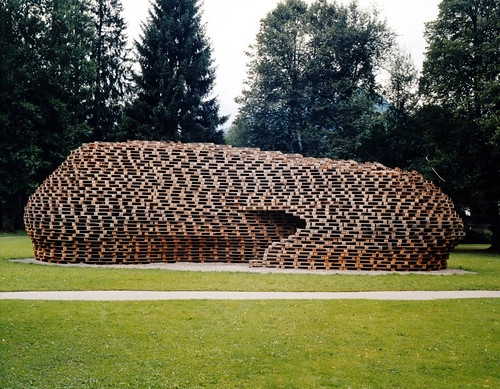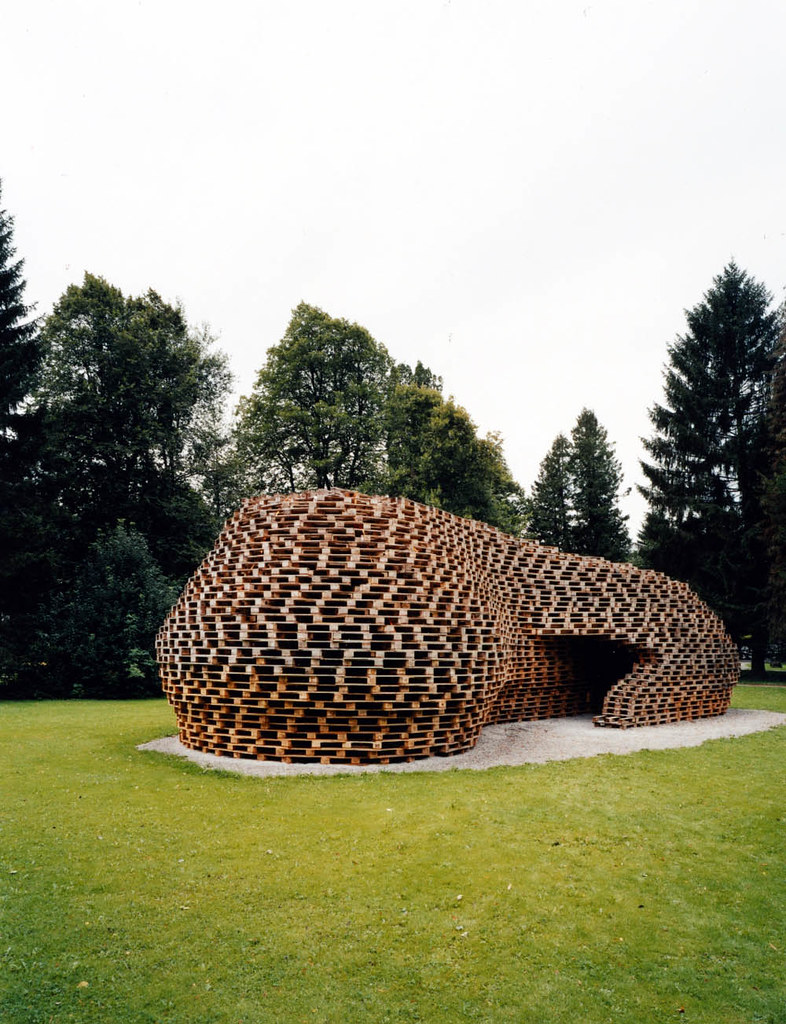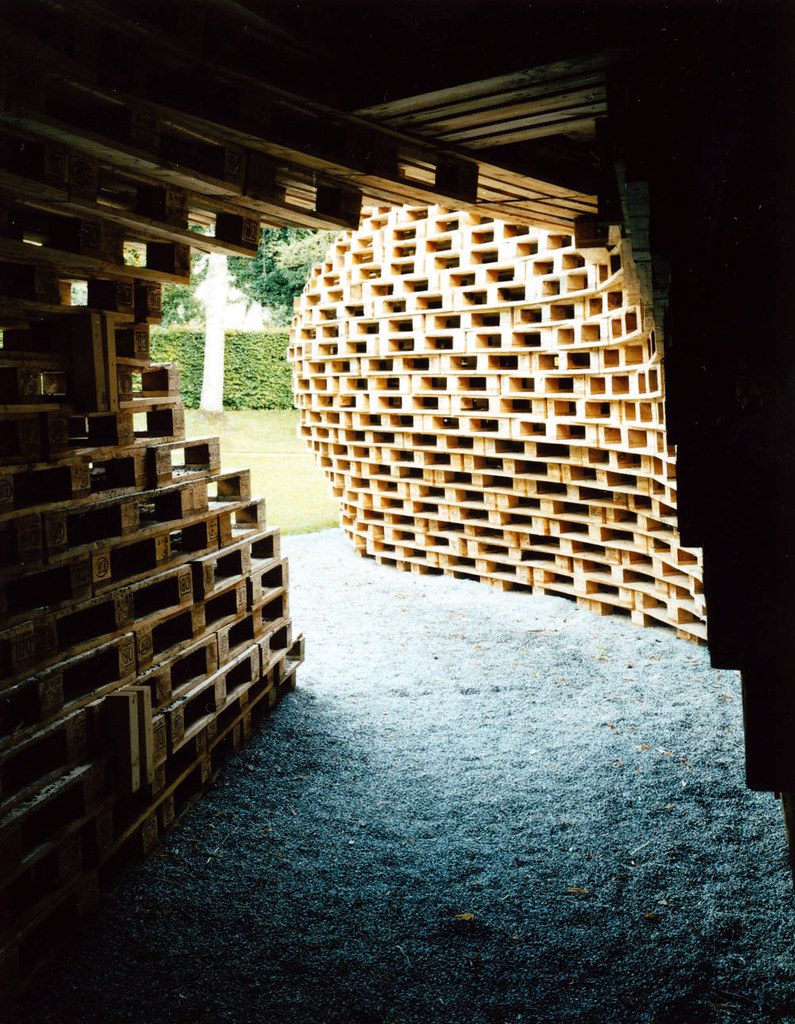 [Image: The Palettenpavillon by Matthias Loebermann, photographed/copyright by Mila Hacke, Berlin].
[Image: The Palettenpavillon by Matthias Loebermann, photographed/copyright by Mila Hacke, Berlin].
The Palettenpavillon by Matthias Loebermann is a structure made entirely from shipping pallets, ground anchors, and tie rods. Designed to be easily assembled and dismantled, and then entirely recycled at a later date, the resulting building is intended as a temporary meeting place. [Image: The Palettenpavillon by Matthias Loebermann, photographed/copyright by Mila Hacke, Berlin].
[Image: The Palettenpavillon by Matthias Loebermann, photographed/copyright by Mila Hacke, Berlin].
As the architect writes, the shipping pallets are "characterized by a complex geometry of open and closed surface portions," with the effect that a staggered stacking of each unit produces "interesting netlike structures." They add that the deceptively curvilinear form becomes a "cave." [Image: The Palettenpavillon by Matthias Loebermann, photographed/copyright by Mila Hacke, Berlin].
[Image: The Palettenpavillon by Matthias Loebermann, photographed/copyright by Mila Hacke, Berlin].
The unexpected modular reuse of everyday materials is nothing new in architecture—seemingly every term in architecture school brings with it experiments in the tiling of things like cable ties, styrofoam cups, plastic water bottles, and so on—but the spatially dramatic effects of this particular experiment in large-scale, off-kilter pallet-stacking are worth seeing. In fact, a kind of micro-village of equally fluid forms built entirely from pallets would be fascinating to see.
 [Images: The Palettenpavillon by Matthias Loebermann, photographed/copyright by Mila Hacke, Berlin].
[Images: The Palettenpavillon by Matthias Loebermann, photographed/copyright by Mila Hacke, Berlin].
The pavilion at night, lit from within, is also pretty eye-popping—though it might be interesting to see if there's some strange way to turn the whole structure into a stationary zoetrope of some sort, i.e. the light shining outward is given content, projecting images on the landscape outside. The pallet building as planetarium-machine. [Images: The Palettenpavillon by Matthias Loebermann, photographed/copyright by Mila Hacke, Berlin].
[Images: The Palettenpavillon by Matthias Loebermann, photographed/copyright by Mila Hacke, Berlin].
On the other hand, perhaps pallet architecture is not universally interesting; this recent experiment in London is what Jonathan Glancey calls "a shrine to the humble timber pallet."
- Until a few weeks ago, these hundreds of pallets were being used to stack fruit and vegetables in Covent Garden market. Cheap, strong and hugely adaptable, they also happen to have a distinctly architectural look, especially when flipped on their sides and turned into walls. Some will be left as they are, others clad with sheets of plywood to keep the rain out and to usher in the darkness needed inside an auditorium.
In any case, for more info on the Palettenpavillon—albeit in German—stop by Loebermann's website.